Forest Park Dedicated June 24, 1876, 140 Years Ago Today (6 Historic Photos)
Forest Park opened 140 years ago today — nearly three decades before the 1904 World’s Fair:
Forest Park, officially opened to the public on June 24, 1876, is one of the largest urban parks in the United States. At 1,293 acres, it is approximately 500 acres larger than Central Park in New York.
In 1904, the Louisiana Purchase Exposition, The St. Louis World’s Fair, drew more than 20 million visitors from around the world to Forest Park. (St. Louis)
When Forest Park was created by the Board of Aldermen residents to the North & South also wanted large parks in their part of the city, so O’Fallon & Carondelet parks were created before Forest Park opened. At that time the parks were largely rural, a way to preserve land in a rapidly growing city.
When Forest Park officially opened to the public on Saturday afternoon, June 24, 1876, it was located in St. Louis County, almost two miles west of the St. Louis City limits and a 40 minute carriage ride from downtown.
The Globe-Democrat reported that the opening day ceremony attracted 50,000 people — at a time when the population of the city was only 350,000.
It was on a railroad line, which had opened only a week before the park was dedicated. The train ride from downtown took 20 minutes.
At the same time as the dedication, the Democratic Party was holding its national convention in Downtown St. Louis. (The 1870 census called St. Louis the fourth largest city in the country behind New York, Philadelphia and Brooklyn.) (St. Louis)
Yes, Forest Park was in unincorporated St. Louis County when initially dedicated. This was a good excuse for me to scan & post vintage/undated images from the archives of Louis (1907-1999) & Georgia (1918-2009) Buckowitz:
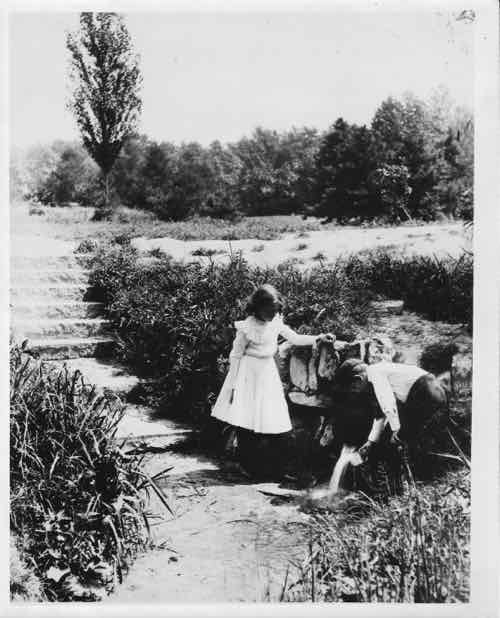
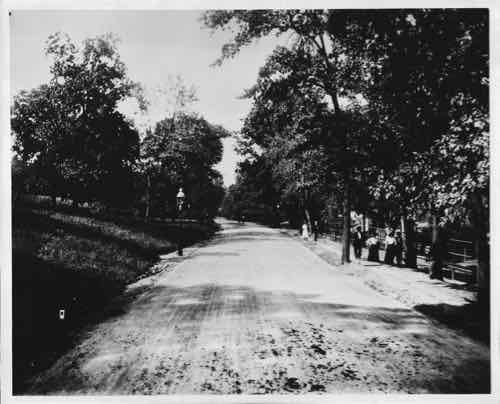
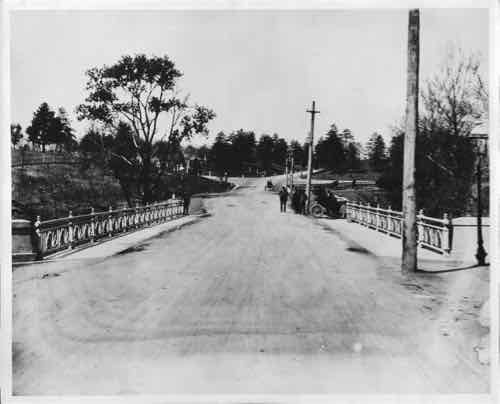
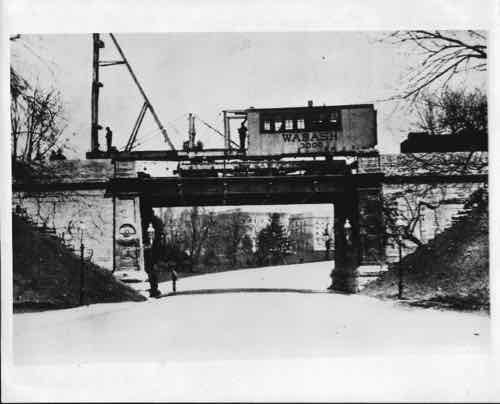
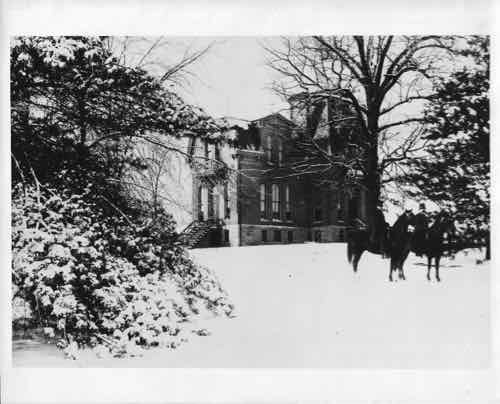
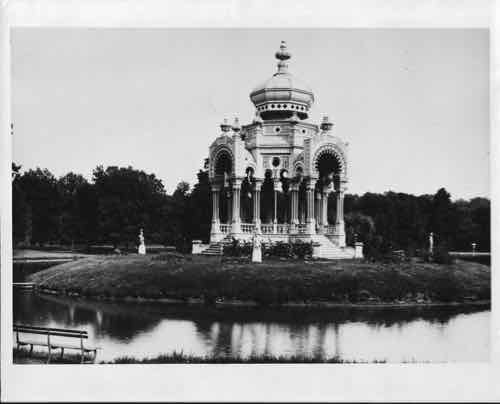
Information on the pagoda bandstand is too much for the caption:
The original Forest Park bandstand, or music pagoda, was a wooden structure that stood on an island in Pagoda Lake. It was built about the time the park was dedicated in 1876. Mary J. Rankin donated statues representing the four seasons in 1886.
The bandstand was renovated and was landscaped for the 1904 World’s Fair. It was the site of concerts before and after the fair.
However, the bandstand fell into disrepair and was declared unsafe in 1911.
Before it could be renovated, it blew down in a storm and was damaged beyond repair.
In July 1924, St. Louis lawyer Nathan Frank donated funds to build a new bandstand. It was designed by Heffensteller, Hirsh and Watson.
The new bandstand cost about $50,000 and is of classic Renaissance design. It is made of white marble with bronze railings and ornaments.
It was renovated in 1981 with $13,000 from the Central West End Charitable Trust, raised by the Central West End Association.
It was renovated and landscaped by the Flora Conservancy of Forest Park under the Forest Park Master Plan. (St. Louis)
Now you know why “Pagoda Drive” is named as such. A decade until the 150th. For information on events celebrating the 140th click here.
— Steve Patterson
The bandstand is a classic example of the challenges of historic preservation. I like the original one a whole lot more than the current one. Which one should be preserved, restored or recreated? Or, should something more contemporary, more appropriate for the 21st century, be built on the island? Hmmm . . . https://c4.staticflickr.com/3/2026/5749035339_6004d5ef5a_b.jpg
Considering the pagoda bandstand in disrepair after just 35 years, then damaged & burned to the ground in a storm the next, I’m not sure what it has to do with preservation.
How do you select the “appropriate” point in time to say that a particular structure is “more important” or “better” than previous or subsequent iterations? The original Victorian design (that survived for 35 years) is far more interesting and “historic”, in my mind, than the one built in the 1920’s and renovated in 1981. Much like taking mid-’50’s aluminum cladding off of a 1920’s downtown building, taking down the Depression-era bandstand and rebuilding the World’s Fair version would seem to be more “historically-accurate”, in my mind.
I knew the Buckowitzs. I was friends with their grandson in high school, good people. Never saw the photo collection. It appears to be amzing